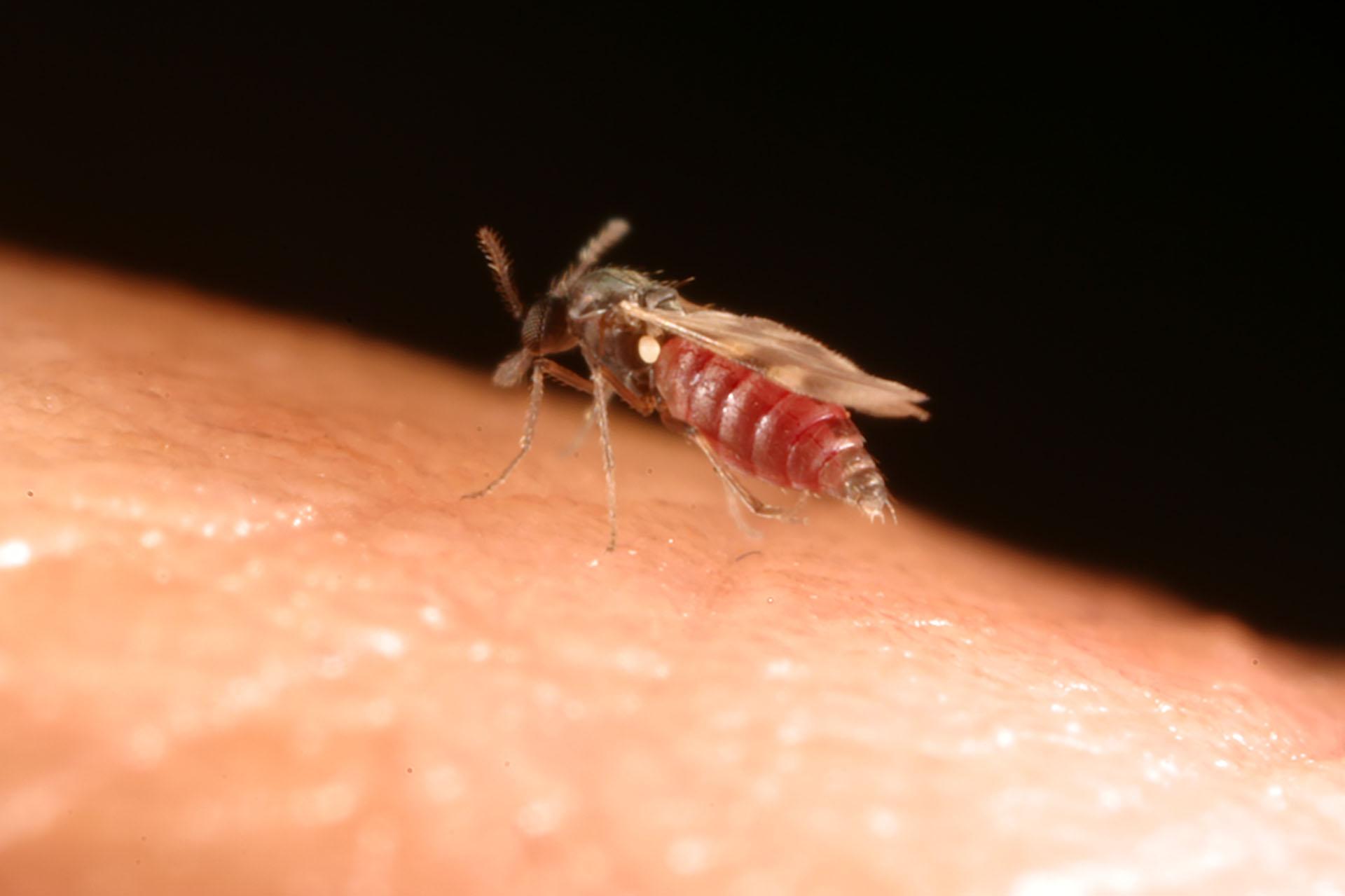A unique study has highlighted an important role for ‘helper’ T-cells in enabling sheep to mount a timely protective immune response to bluetongue virus (BTV) infection.
Transmitted by Culicoides biting midges, bluetongue virus has recently been detected in over 80 sheep and cattle across farms spanning three counties in southern and eastern England. Infected midges are thought to have been blown across the channel from the Netherlands, where it was first detected at the end of last year.
A team at The Pirbright Institute used a sophisticated T-cell depletion model to investigate the role of T-cell subsets in sheep during bluetongue virus infection. T-cells are white blood cells which are essential for mounting immune responses to specific pathogens in mammals.
The study, funded by the BBSRC and Defra, was the first of its kind to employ a highly representative ‘sheep-virus-midge’ transmission model, closely mimicking natural bluetongue virus infection in sheep and onwards transmission to midges.
By using Culicoides midges to infect ‘live’ hosts, the scientists were able to investigate the consequence of absent T-cell subsets on bluetongue disease progression, sheep immune responses, the ability of virus to replicate and cause disease and onwards transmission of the virus to uninfected Culicoides biting midges.
Writing in Frontiers in Immunology, Pirbright lead researcher, Dr Kerry Newbrook, said: “We demonstrated that individual T-cell subsets modulate clinical outcome, with the absence of CD8+ T cells associated with lower clinical scores and higher survival, and loss of CD4+ and WC1+ γδ T cells resulting in higher clinical scores and severity.”
Commenting on the paper, Dr Newbrook added: “As this is the first study to investigate the role of individual T-cell subsets during bluetongue virus infection in sheep using a representative vector-borne transmission model, we really had a blank canvas to work with and weren’t entirely sure what we were going to find, which is very exciting”.
“T-cell depletion has also never been attempted before in the context of investigating their role in BTV infection. ‘Killer’ CD8+ T-cells are cytotoxic by name, so it was not a surprise that they contributed to pathology in the sheep and that in their absence we observed less severe clinical disease. We were interested to find just how important the CD4+ T-cells were in establishing a timely protective immune response in the sheep. What was also surprising to us is that our study showed T-cells had no bearing on viral dynamics, the shedding of the virus or onwards transmission to the vector.”
Typical signs of bluetongue in sheep include fever, ulcers or sores in the mouth and nose, discharge from the eyes or nose, drooling from the mouth and swelling of the head, neck, lips or tongue. Lameness and breathing problems may also be seen.
“Our research highlights the diverse function of T-cells in protecting from and contributing to disease and identifies CD4+ T cells may be particularly important targets for future vaccine design,” added Dr Newbrook.
The researchers hope that their highly representative infection model will inspire other scientists in the vector-borne disease field to utilise the most representative infection models for in vivo studies, which incorporates not only the virus and host but also the vector.
The paper - ‘Specific T-cell subsets have a role in anti-viral immunity and pathogenesis but not viral dynamics or onwards vector transmission of an important livestock arbovirus’ - is published in Frontiers in Immunology: Volume 15 - 2024 | https://doi.org/10.3389/fimmu.2024.1328820
For further information about bluetongue virus research at Pirbright, visit our bluetongue virus webpage or contact communications@pirbright.ac.uk
